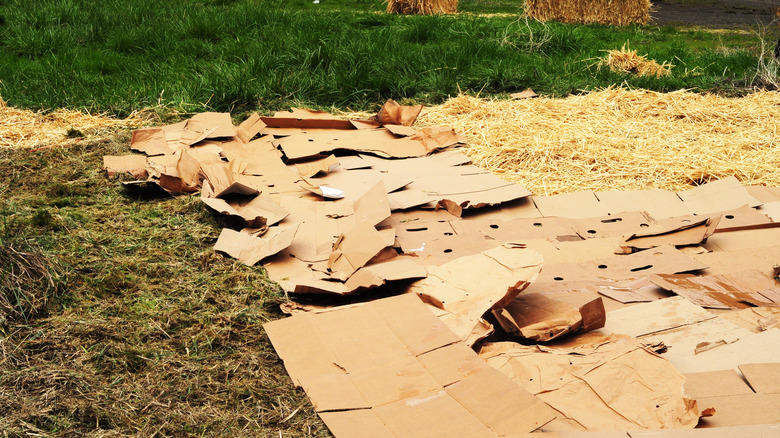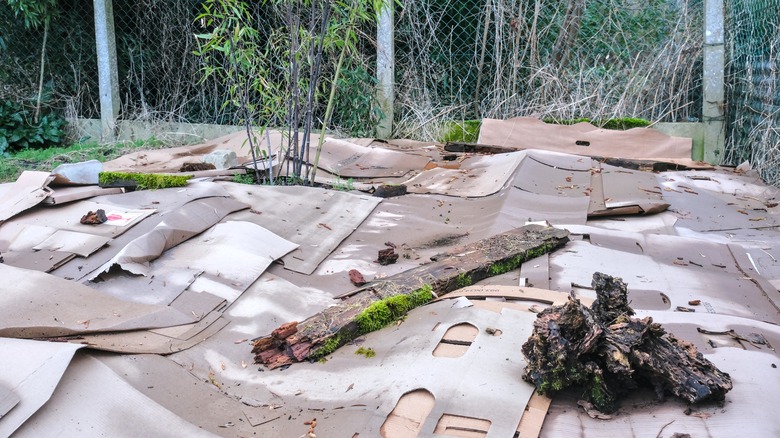Goldenrod can be a divisive plant. Despite being a beneficial native plant in North America, the yellow flowering “weed” is also fairly aggressive, and as it often spreads via rhizomes, it can be surprisingly difficult to remove. Luckily, the clever trick of using cardboard as sheet mulch can smother goldenrod, ridding you of the plant without destroying your soil in the process.
Goldenrod can refer to several species in the Solidago genus and is often confused with ragweed (Ambrosia artemisiifolia). Goldenrod, unlike ragweed, is extremely unlikely to cause allergies and can be a great addition to pollinator gardens, as it is a major food source for many native bees and other pollinator species. There are species of goldenrod that are hardy down to USDA zone 2, so for better or worse, there’s a good chance goldenrod can and will grow in your region. Many species of goldenrod spread by both seeds and rhizomes, allowing them to rapidly take over an area. For that reason, it’s suggested to grow goldenrod only in a contained area.
Using cardboard sheet mulch to eradicate goldenrod

Sheet mulching is a popular and practical method for eliminating large areas of weeds and grasses. If you have a large patch of goldenrod you’re trying to remove, smothering it with cardboard might be your best option. First, mow down the goldenrod, cutting it as close to the ground as possible, and wet the area with a hose or sprinkler. Then, prepare your cardboard. Yes, it’s finally time to use those empty boxes that have been taking up space in your garage.
Cut the cardboard into flat pieces, and remove any tape, staples, or other inorganic material. Once you have your sheets of cardboard, spread them out over your goldenrod-infested soil, making sure to overlap the pieces of cardboard so there are no cracks or gaps for weeds to grow through. Be sure to secure your cardboard down with either landscape staples or heavy rocks.
Next, simply put soil and wood chips over the cardboard and begin your new garden. The cardboard should prevent the goldenrod from growing, smothering the unwanted weeds. As the cardboard slowly decomposes, it should nourish the soil, resulting in a healthy garden.
Disadvantages of cardboard sheet mulch

While cardboard sheet mulch should eradicate the majority of your goldenrod, sheet mulch alone may not entirely remove perennial weeds, so be prepared to pull the occasional goldenrod plant from your new garden. Cardboard mulch may also not be the best option for slopes, as it can prevent moisture from seeping into the ground, leading to runoff.
Many people prefer cardboard sheet mulching to herbicides for weed removal in the hopes that it is better for the environment. While sheet mulching strategies are generally considered low risk, some researchers note that using cardboard in gardening is a relatively new practice, so it still needs more research, and there is some evidence that it can lead to pest problems, especially with termites and rodents. For example, Linda Chalker-Scott, a horticulture professor at Washington State University, opposes the practice and expresses concerns on her website, The Garden Professors, regarding the PFAS, aka “forever chemicals,” often found in cardboard and the possible risks of introducing them into your garden soil.



